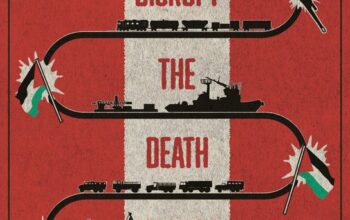The geopolitical scenario of the Middle East has undergone significant rearrangements since the end of the 20th century. The Gulf War, the aggression against Iraq and the crisis scenarios derived from the failed democratisation processes are among the most noteworthy events. Coupled with a prominent militarisation of the area alongside the US this reflects the growing importance of security in regional politics.
Since the early 1990s, several countries in the region, notably Gulf monarchies embarked on an arms race to strengthen their individual military capabilities due to an unfeasible regional system of collective security throughout the Pan-Arab region. The sustained increase in military spending led the Middle East to lead other global regions, in percentage terms of GDP, investing more resources in the defence sector. In 2018, military spending represented an average of 5.5% of the regional GDP, an amount much higher than that of the rest of the other geographical areas. (World Bank 2019)
The vast majority of Middle Eastern countries have devoted a percentage of GDP above the global average to the military sector over the past three decades. As far as the Gulf monarchies are concerned, the difference is very significant, especially in the case of Saudi Arabia. At the end of the 1990s, the military spending of the Saudi Kingdom was already, in gross terms, the largest in the region and has significantly swerved upwards ever since. This resulted in making the kingdom the third country with the highest military spending, after the United States and China. Notably the world’s largest arms buyer, monopolising 12% of global imports (SIPRI 2019, 9).
The per capita spending at the beginning of the 21st throughout the Middle East is a clear indicator that heralds a new age of military arsenal in the Middle East. In 2018, Saudi Arabia’s per capita military spending was $2,005 per capita, nearly 10 times the world’s average spend. Kuwait’s per capita spending was nearly eight times the world average, and Oman’s was six times higher. Even the small state of Bahrain was close to quadrupling the global average. Back in 2014, the UAE was already even higher than the Saudis, at approximately 2,363 dollars per head. In contrast, the per capita military spending of the rest of the Arab countries was much lower, with Lebanon even below the world average. This data not only helps to understand the new dynamics in the struggle for regional supremacy but symbolises the decline of the traditional Arab leaderships (Egypt, Iraq, Libya, Syria) and the growing role of the Gulf monarchies spearheaded by Saudi Arabia.
The concern for national security after the Iraqi aggression against Kuwait and the interest of the United States in turning the rich oil monarchies into preferred clients of its military-industrial trade has resulted in once weak Gulf countries now entering a new era of strengthening and modernisation of its armed forces. As a result, this new military potential adds weight to their important economic and ideological influence in turn offering greater capabilities and possibilities to actively intervene in geopolitics and conflict scenarios within the region.
The only country with military per capita expenditure on par with the Gulf monarchies is Israel, undoubtedly the greatest armed force power in the region as national security has been their main priority since its creation in 1948. Furthermore, of greater distinction between its Arab neighbours, is Israel’s nuclear arsenal coupled with a modern war industry which sees it consistently ranked in the top 10 arms exporters throughout the world. (SIPRI 2018, 8).
Another case that should not be dismissed is Iran as although it has modest statistics in terms of military spending it does not truly reflect the efforts of the Tehran government to develop a national arms production. While the Gulf monarchies are major importers of military technology, especially from the United States, due to prolonged international isolation and sanctions imposed chiefly due to the Islamic revolution it has forced Iran to seek more independent alternatives – the controversial Iranian nuclear program being the most consequence of this effort.
At its height in 2016, approximately 87 million people in the Arab world (Middle East and North Africa) were directly affected by armed warfare representing around a third of the regional population. In these countries, all aspects of people’s lives such as housing, health, education, employment, food and water supply were inevitably affected by the intense fighting in the various wars. (MENA, 2016).
The armed conflicts throughout the Middle East and North Africa have had a knock-on effect for neighbouring countries. Turkey, Lebanon, Jordan and Egypt, countries who have already experienced years of economic constraints have been placed further under enormous budget pressure. The World Bank estimates that the arrival of more than 630,000 Syrian refugees in Jordan has cost the country more than $2.5 billion a year. This is equivalent to 6% of GDP, and a quarter of annual public revenue. The fighting in Syria has affected not only neighbouring governments, but also its citizens, with average per capita income estimated to be 1.5% lower now than it would have been (without the turmoil in Syria) for many Turks, Egyptians, Jordanians and Lebanese.
The end of conflict will always improve macroeconomic factors as this can be reallocated in public resources. Yet the pace of recovery will be strongly influenced by natural resources. Lebanon’s economy took 20 years to recover from war, Kuwait seven years, and Iraq, just a year. Such an example of oil-rich economies proves that mass reserves of oil production can be a major lifeline to get back on track. However, this is always dictated by the price of oil which if stays low, and international aid remains scarce, oil-exporting countries will have a harder time recovering from their current situation as demonstrated by countries such as Libya, Syria, Iraq and Yemen. Ultimately recovery in such war-torn regions will need to be fuelled by local entrepreneurs and secure overseas private investment, in order to cultivate a stable and fruitful economy.
Sean Campbell
References:
SIPRI (Stockholm International Peace Research Institute). 2019. SIPRI Yearbook 2019. Armaments, Disarmament and International Security. Oxford: Oxford University Press. http://www.dmrsc.com/Document/SIPRIyearbook2019Summary.pdf
World Bank. 2019. Military spending (% of GDP)
MENA Quarterly Economic Brief, January 2016: The Economic Effects of War and Peace
https://reliefweb.int/sites/reliefweb.int/files/resources/The0economic0effects0of0war0and0peace.pdf



